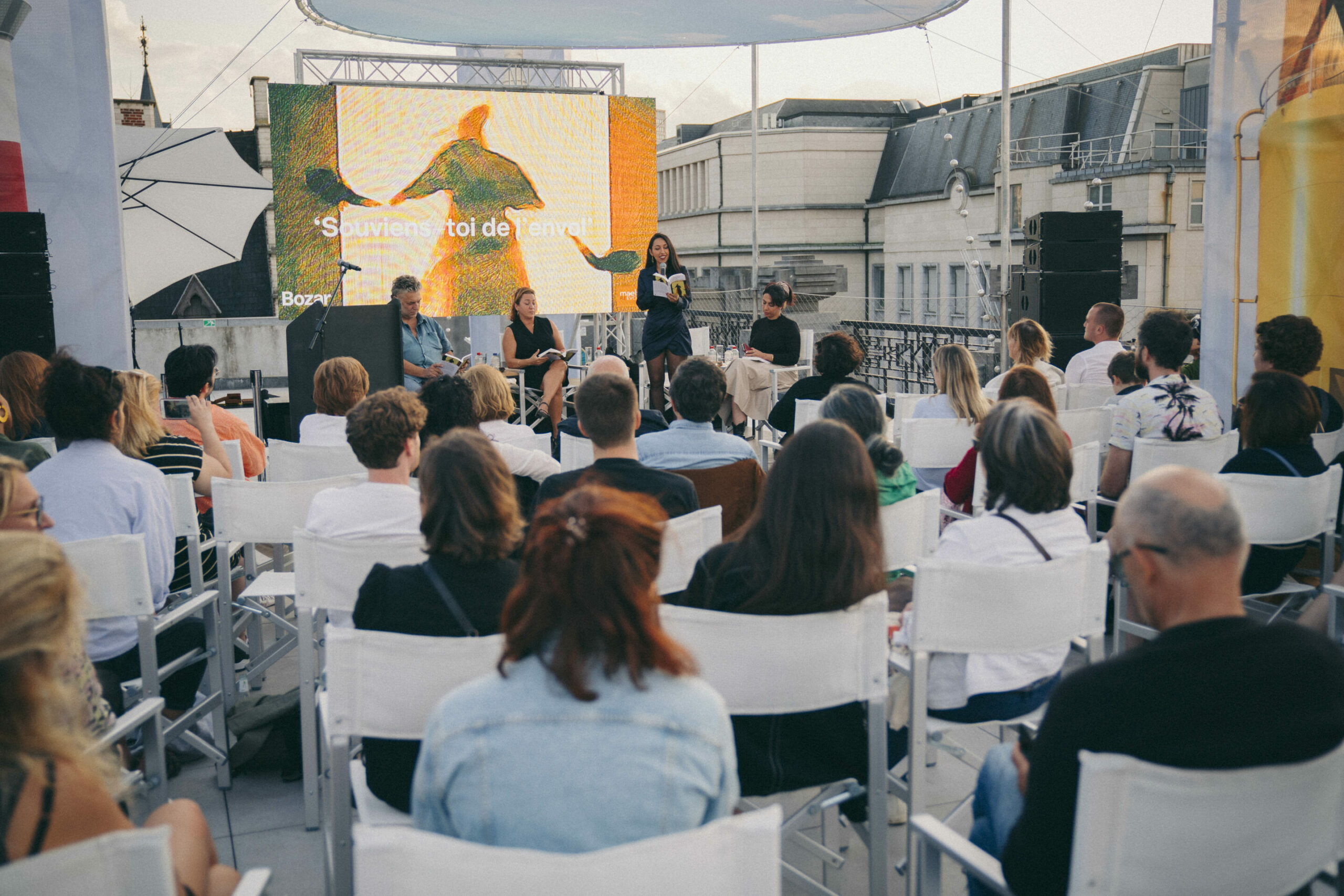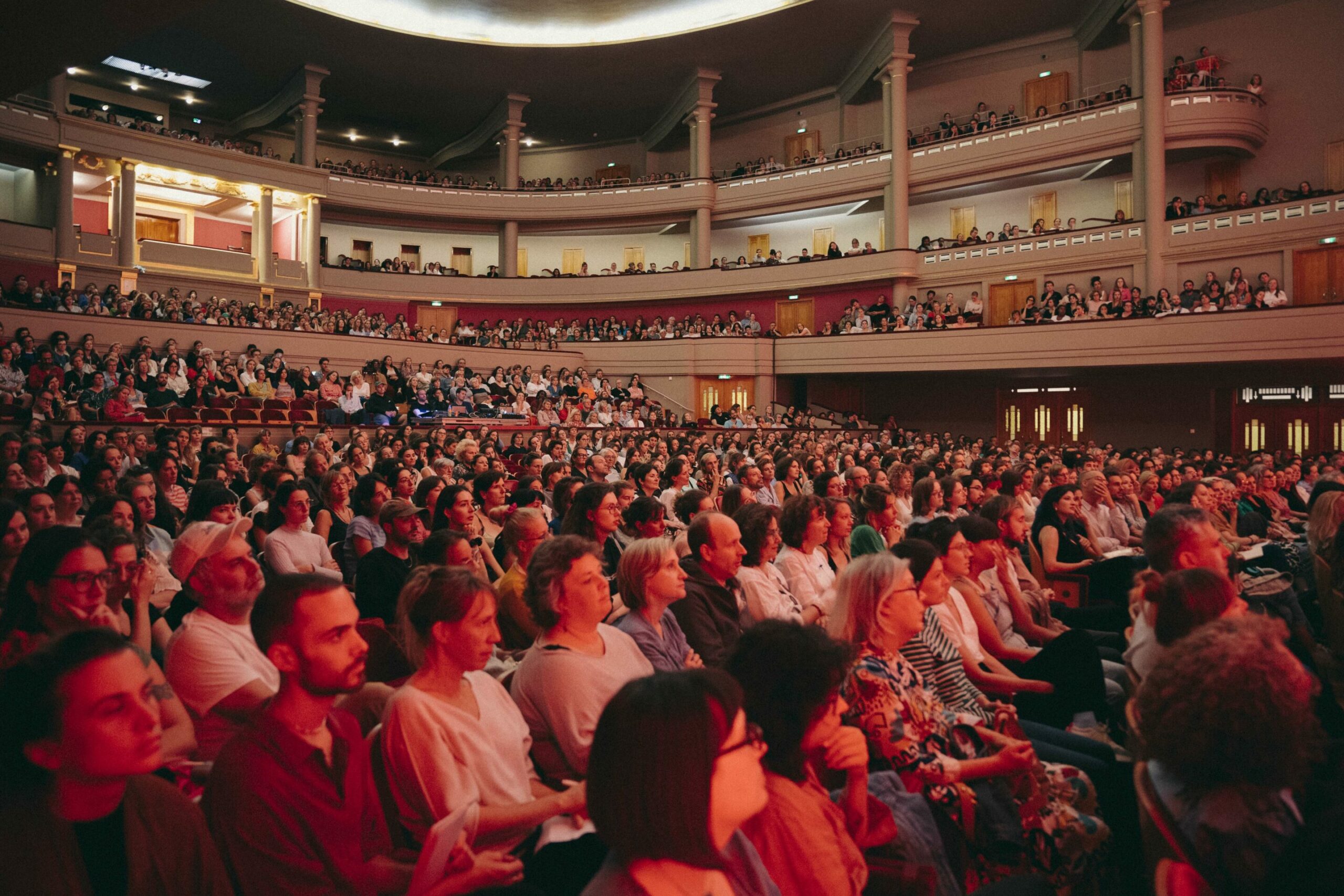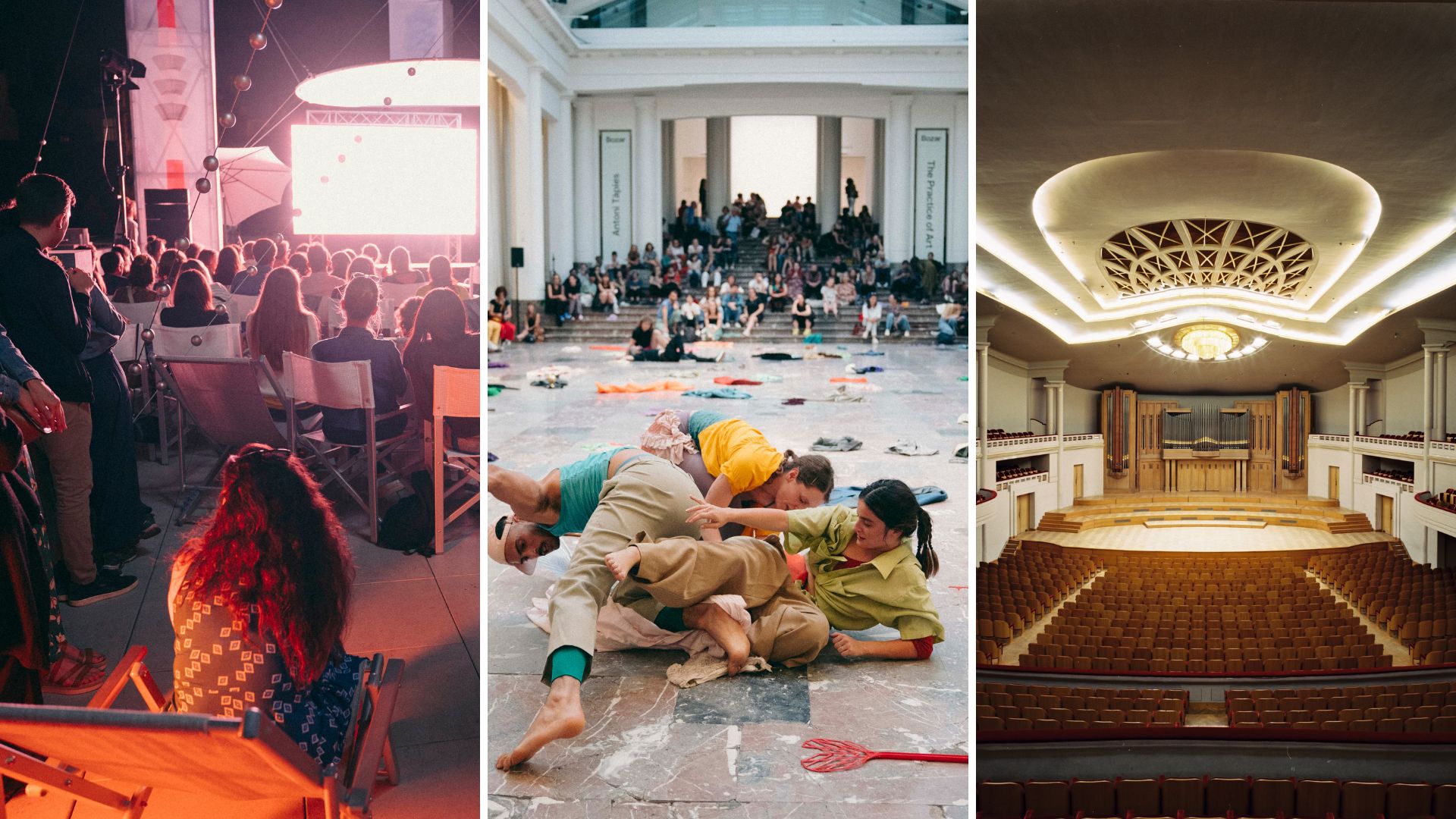In four years’ time, Bozar will celebrate its 100th anniversary. As the iconic institution seeks to remain at the helm of the cultural avant-garde, its current director spoke to The Brussels Times on what it has in store to attract new visitors – particularly young people.
The art-deco building, designed by Victor Horta, opened in 1928 as a centre for concerts and exhibitions. And that is the foundation of its reputation to the current day. In recent years, it has put on exhibitions by some of the world’s artists including David Hockney, Keith Haring, Spanish painter Antonio Tapiès and Romanian sculptor Constantin Brâncuși. Some of the world’s greatest musicians, conductors and composers have performed there including violinist Anne-Sophie Mutter, jazz pianist Herbie Hancock and British conductor Simon Rattle,
Unlike the Old Masters Museum the austere 19th century building on rue Royale which houses many Flemish masters and many other major artworks, Bozar – a play on the French term beaux arts – does not have a permanent collection of its own. Instead, it relies on its global reputation as an arts centre to attract works by some of the world's greatest artists, living and dead.
Under new direction since February 2023, the current director, Christophe Slagmuylder, wants to build on Bozar’s considerable reputation for visual arts and music to develop its image as a place where different “art forms can enter into a dialogue”.
Born in Brussels, Slagmuylder earned a master’s degree in fine arts at the Free University of Brussels (VUB) and made his name at some of the city’s small but innovative theatres including Les Tanneurs in the Marolles. From there, he ran Brussels’ performing arts festival, kunstenfestivaldesarts, before being lured to Vienna to take charge of the city’s festival Wiener Woche, which combines Vienna’s operatic pedigree with visual and other arts.

Christophe Slagmuylder, new director of the Bozar Centre for Fine Arts (Palais des Beaux-Arts - Paleis voor Schone Kunsten) museum in Brussels, Wednesday 15 March 2023. Credit: Belga / Hatim Kaghat
He describes his time before coming to Bozar as "nomadic". The centre "is my first house," he says.
In his vision of Bozar, Slagmuylder takes inspiration from the British model of places like the Southbank Centre, which put on exhibitions and concerts, and has the British Film Institute next door. Belgium’s equivalent, Cinemathek, is part of the Bozar building.
One of the ways he plans to achieve this dialogue is by making better use of Bozar as a building, taking advantage of all its spaces.
This year has seen the opening of the new Terarken room – expressly designed to stage electronic artists and acts in unseated space for 400-500 people. Chicago-born electronic artist Jlin and Canadian artist Marie Davidson have already played in the former underground carpark.
Slagmuylder wants to create a coherent image for Bozar as a place people can relate to in itself and not simply come to "consume" artworks, as he puts it.

The new Terarken hall at Bozar during Listen Festival. Credit: Bozar
On this, he points to the new rich programme of talks with inspiring speakers, which draw a slightly different audience from the usual art and music lovers. In recent years, Bozar has hosted Bernie Sanders, the (relatively) left-wing US senator, French economist Thomas Piketty and Ai WeiWei, the exiled Chinese artist.
Audiences inside walls
The building, from its imposing setting on Rue Ravenstein, has a special place in Belgium’s cultural life. It is one of only three cultural institutions that receives funding from the Federal Government; the others being La Monnaie/de Munt opera house and the Belgian National Orchestra (BNO).
BNO performs most of its Belgian concerts at Bozar. Slagmuylder points out that public funding provides less than 50% of the centre’s financial needs with the rest coming from sponsors. Government funding wouldn’t even cover the costs of maintaining the building’s infrastructure, he says.
Slagmuylder says his vision for the Bozar involves making more of the space and making the audience "part of the life of the building."

Credit: Bozar / Marin Driguez
One example he gives is a new initiative for this season entitled Staging the Concert, where the two pillars of Bozar’s programme, visual art and music, "enter into dialogue", which aims to explore new dimensions of the concert experience through the interplay with space, light and materials.
Slagmuylder has invited the renowned Belgian architects Robbrecht en Daem to participate in an architectural installation called Bartók in Space and Time. To perform the Hungarian composer’s 1937 piece Music for strings, percussion and celesta, two identical string ensembles are placed face-to-face like a mirror image, with percussion instruments in between. Robbrecht & Daem have translated the architectural principles of the score into five floating objects in the hall Henry Le Boeuf, accentuated by lighting design.
In a second event, a group of solo musicians will perform works of Italian composer and electronic music pioneer Luciano Berio. Instead of being static in the concert hall, the musicians will be placed throughout the building so listeners are obliged to move through Bozar’s spaces, adding a kinetic dimension to the experience. The staging of Berio’s work also fits with another of Slagmuylder’s themes: the appreciation of artistic couples.
For many of his compositions, Berio worked with his first wife, Cathy Berberian, a classical singer whose avant-garde approach pushed the boundaries of contemporary taste. The two artists would have been 100 in 2025 so Slagmuylder sees next year as a fitting time to celebrate their artistic creations.

Talk in Henry Leboeuf Hall. Credit: Bozar / Henry Leboeuf
This season’s programme features another pairing: Bryce Dessner, one of the two guitarists of US indie band The National, will be teaming up with the French pianist twins, Katia and Marielle Labèque, to perform some of the classic works of post-war composers including Philip Glass and Steve Reich as well as pieces by Dessner himself.
But while offering distinctive approaches to programming, Bozar will continue to provide some of the world’s finest musicians, composers and conductors. One of the rising stars from the world of conducting, Klaus Mäkelä from Finland, will be conducting three orchestras (the Oslo Philharmonic, the Orchestre de Paris and the Koninklijk Concertgebouworkest Amsterdam) in performances of works by Stravinsky, Tchaikovsky and Mahler.
Other highlights include performances of pieces by US Grammy-winning composer Caroline Shaw and The Los Angeles Master Chorale directed by director Peter Sellars. The 24-member chorale will perform Baroque composer Heinrich Schütz’s Musikalische Exequien (Music to Accompany a Departure).
From the jazz world Bozar will host concerts by US guitarist Pat Metheny and sax player and band leader Kamasi Washington.
Slagmuylder says that the size and acoustics of Bozar’s 2,400 seater Henry Le Boeuf hall (named after the Belgian banker who helped raise the funding to build the centre) continues to attract the best performers, orchestras and conductors to pay at Bozar. But he stressed the importance for Bozar of having its own programming and not relying on "the bookers and promoters" who often seem to determine some venues’ programming.
"My vision is to work together, to present something more coherent," Slagmuylder says.

